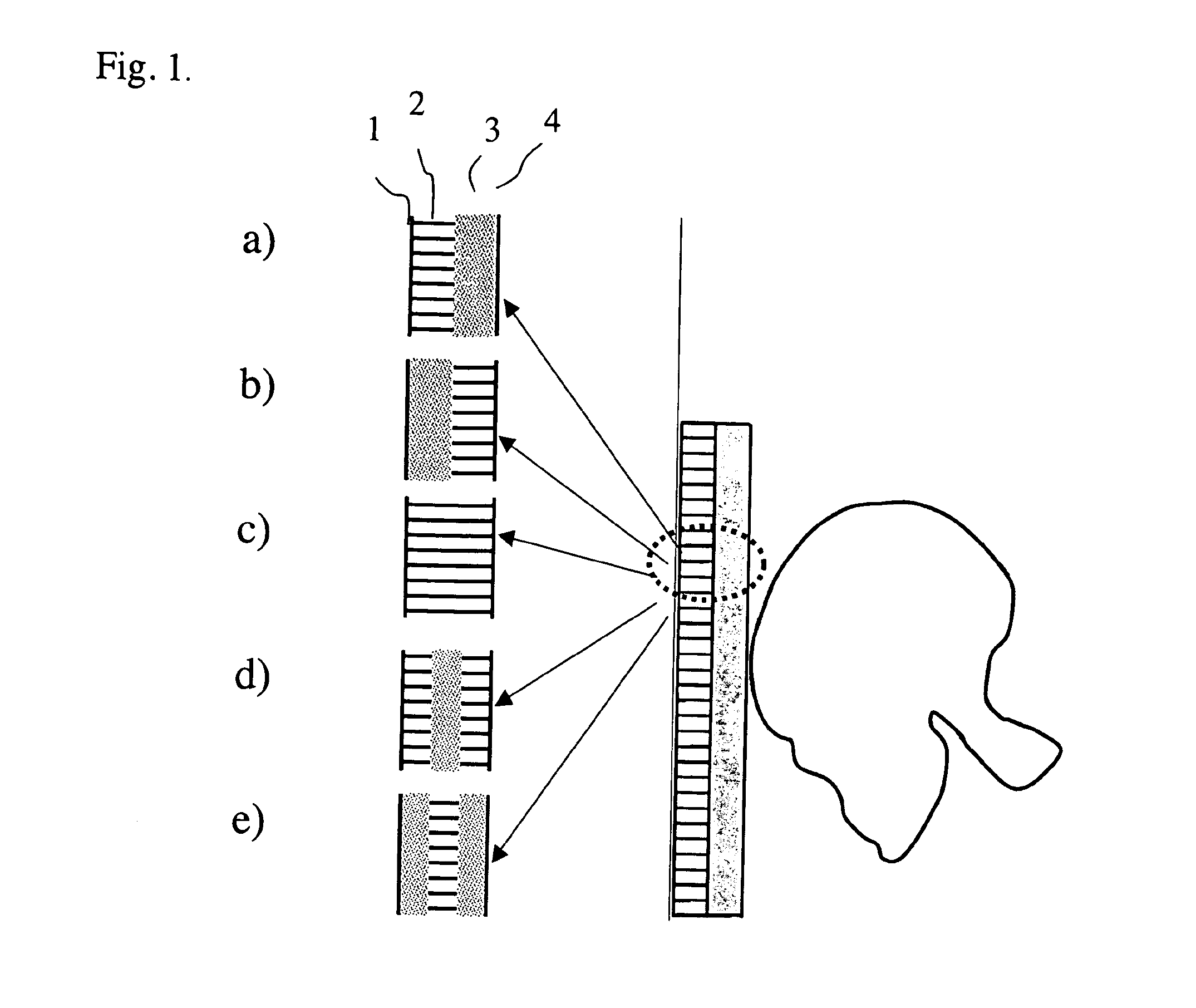Protective material
a technology of protective materials and materials, applied in helmets, sports apparatus, applications, etc., can solve the problems of not being able to best manage or modulate angular forces, unable to achieve significant reduction of angular acceleration, and application does not describe use, so as to reduce the transmission force
- Summary
- Abstract
- Description
- Claims
- Application Information
AI Technical Summary
Benefits of technology
Problems solved by technology
Method used
Image
Examples
example 1
[0071]For a structure designed with flexible spikes having a soft plastic outer shell, the outer shell, the spike layers including the inserts are casted in one piece using the same soft polymer material (silicone rubber, Dow Corning, Midland, Mich.). After casting compartment walls are included in the process so that a number of spikes are constrained within their own compartment of air, consequently producing a complete module.
example 2
[0072]For a structure designed with spikes having a hard plastic outer shell, the spike layers including the inserts are casted in one piece using silicone rubber (Dow Corning, Midland, Mich.). During casting, compartment walls are included in the process so that a number of spikes are constrained within their own compartment of air. The hard plastic outer shell is casted using acrylonitrile butadiene styrene (ABS, Trident Plastics Inc. Ivyland Pa.). The spike layer module is covered with a layer of expanded polypropylene (ARPRO®, JSP, Madison Heights, Mich.) and the resulting structure is glued to the hard plastic outer shell.
example 3
[0073]For a helmet designed with flexible spikes having a soft plastic outer shell, the outer shell and the spike layers including the inserts are cast in one piece using the same soft polymer material (silicone rubber, Dow Corning, Midland, Mich.). The spikes in the helmet are 10 mm long, have a diameter of 2 mm and are placed 6 mm from each other. After casting, compartment walls are included in the process so that a number of spikes are constrained within their own compartment of air. In this way a complete module is produced and the outer and inner shells together are coupled with an internal layer of energy absorbing foam liner made by expanded polypropylene (ARPRO®, JSP, Madison Heights, Mich.).
PUM
| Property | Measurement | Unit |
|---|---|---|
| height | aaaaa | aaaaa |
| velocity | aaaaa | aaaaa |
| Young's modulus | aaaaa | aaaaa |
Abstract
Description
Claims
Application Information
 Login to View More
Login to View More - R&D
- Intellectual Property
- Life Sciences
- Materials
- Tech Scout
- Unparalleled Data Quality
- Higher Quality Content
- 60% Fewer Hallucinations
Browse by: Latest US Patents, China's latest patents, Technical Efficacy Thesaurus, Application Domain, Technology Topic, Popular Technical Reports.
© 2025 PatSnap. All rights reserved.Legal|Privacy policy|Modern Slavery Act Transparency Statement|Sitemap|About US| Contact US: help@patsnap.com



